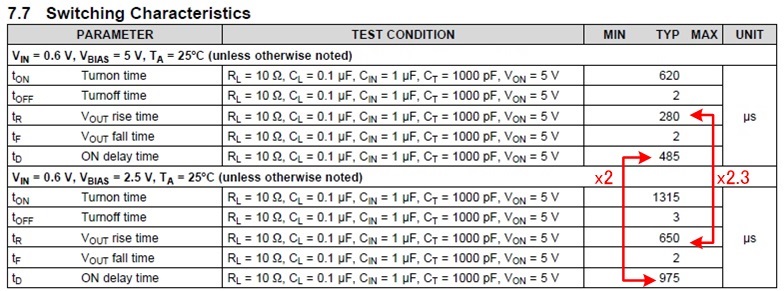Hi, Load Switch Support team,
As far as I see the 7.7 Siwtching Characteristcs of TS22975 datasheet, Vbias affects to "Vout Rise Time" and "ON Delay Time" as follows. Vbias and time appear to be inversely proportional.
But, the Equation 1 in page 15 of TP22975 datasheet doesn't look like that Vbias is considered. And also, Table 1 is shown only the relation of Rise Time vs CT Capacitor under Vbias=5V. There is not other table in considering Vbias is 2.5V and 3.3V.
Please clarify the equation to calculate "Rise Time" and "ON Delay Time" that considered Vbias.
By the way, is the output voltage of the internal charge pump two times of Vbias?
Regards,
Tamio


